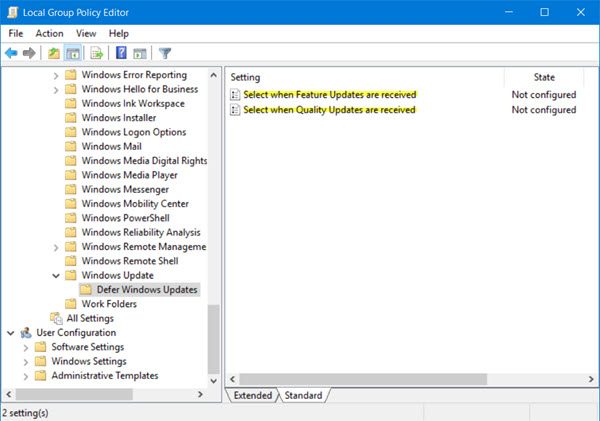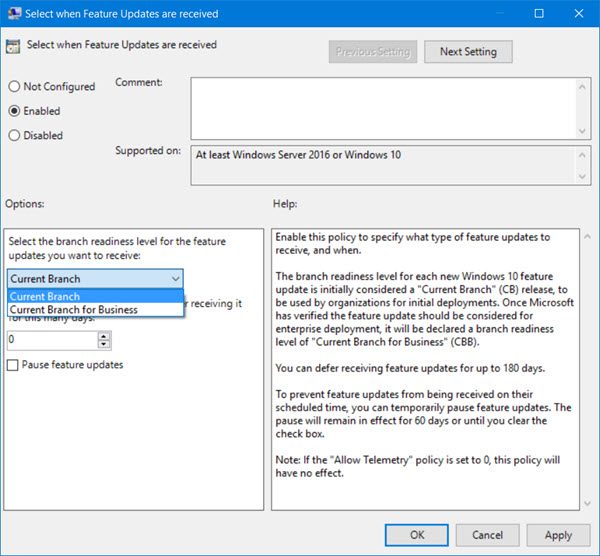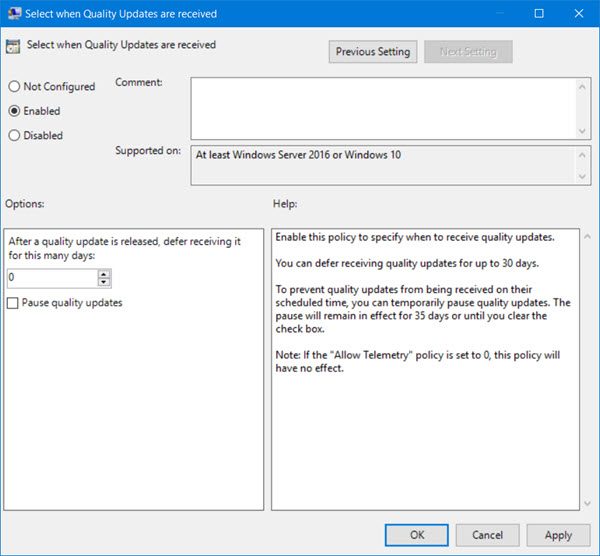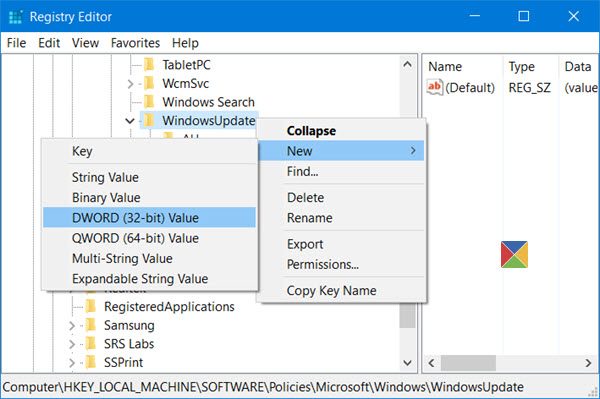You can Defer Upgrades & installation of Windows Updates in Windows 11/10, by modifying the Windows Registry. We have already seen how Windows 11/10 Professional, Enterprise or Education edition users can easily Defer Upgrades via Settings. Now let us see how to do it by tweaking some Registry keys. When you do this, the download and installation of Windows Updates on your computer system will be deferred. Using Group Policy, you can defer Quality Updates by up to 30 days, and defer Feature Upgrades for up to 180 days using Group Policy or Registry.
Before you proceed, open Settings > Update & security > Windows Update > Advanced Options and select the Defer upgrades check-box.
Defer Windows Updates using Group Policy
Type gpedit.msc in Start Search and hit Enter to open the Group Policy Editor. The Group Policy Editor is available in Windows 11/10 Professional, Enterprise or Education editions only.

Navigate to the following setting:
Computer Configuration > Administrative Templates > Windows Components > Windows Update > Defer Upgrades and Updates.
Double-click on Select when Feature Updates are received and in the Properties box which opens, select Enabled.

Enable this policy to specify what type of feature updates to receive, and when. The branch readiness level for each new Windows 10 feature update is initially considered a “Current Branch” (CB) release, to be used by organizations for initial deployments. Once Microsoft has verified the feature update should be considered for enterprise deployment, it will be declared a branch readiness level of “Current Branch for Business” (CBB). You can defer receiving feature updates for up to 180 days. To prevent feature updates from being received on their scheduled time, you can temporarily pause feature updates. The pause will remain in effect for 60 days or until you clear the check box.
From the drop-down menu select Current Branch or Current Branch for Business and then the period for which you want to defer the updates. You may select the Pause quality updates checkbox if you wish to.
Next, double-click on Select when Quality Updates are received and in the Properties box which opens, select Enabled.

Enable this policy to specify when to receive quality updates. You can defer receiving quality updates for up to 30 days. To prevent quality updates from being received on their scheduled time, you can temporarily pause quality updates. The pause will remain in effect for 35 days or until you clear the check box.
In the field, move the arrows to set a figure from 1 to 30 to defer the updates and select the Pause quality updates checkbox if you wish to.
Click Apply and restart your computer.
TIP: You can now Defer Feature Updates up to 365 days & Quality & Security Updates by 30 days – or Pause Windows 10 Updates by 35 days in Windows 10 Home too!
Defer Windows Upgrades using Registry
You can also achieve this by modifying the Registry as follows.

Type regedit in the Start Search bar and hit Enter to open the Registry Editor. Now navigate to the following registry key:
HKLM\Software\Policies\Microsoft\Windows\WindowsUpdate
Right-click on WindowsUpdate and select New > DWORD (32-bit) Value.
Name it DeferUpgrade. and give it a value of 1.
Now again right-click on WindowsUpdate and select New > DWORD (32-bit) Value.
Name this key as DeferUpgradePeriod, and double-click on it. Here you set its value from 0-8. Here, the digit represents the number of months you want to delay the installation of upgrades. Selecting a number 3 will defer the upgrades by 3 months.
Now for the third time, we have to repeat the process. Again right-click on WindowsUpdate and select New > DWORD (32-bit) Value.
Name the DWORD as DeferUpdatePeriod and double-click on it and give it a value between 0-4. Here the digits stand for the number of weeks. If you choose 4, you will be able to delay the installation of updates by 4 weeks.
If you wish to simply pause all upgrades, under WindowsUpdate key, create a DWORD value, name it as PauseDeferrals and give it a value of 1.
To reverse the changes, you may simply delete the created keys.
Using this method, you can configure Windows Update for Business. For more on this, you may visit Technet.
NOTE: Microsoft has removed the Defer Updates option from Settings in Windows 10 v2004 and later.